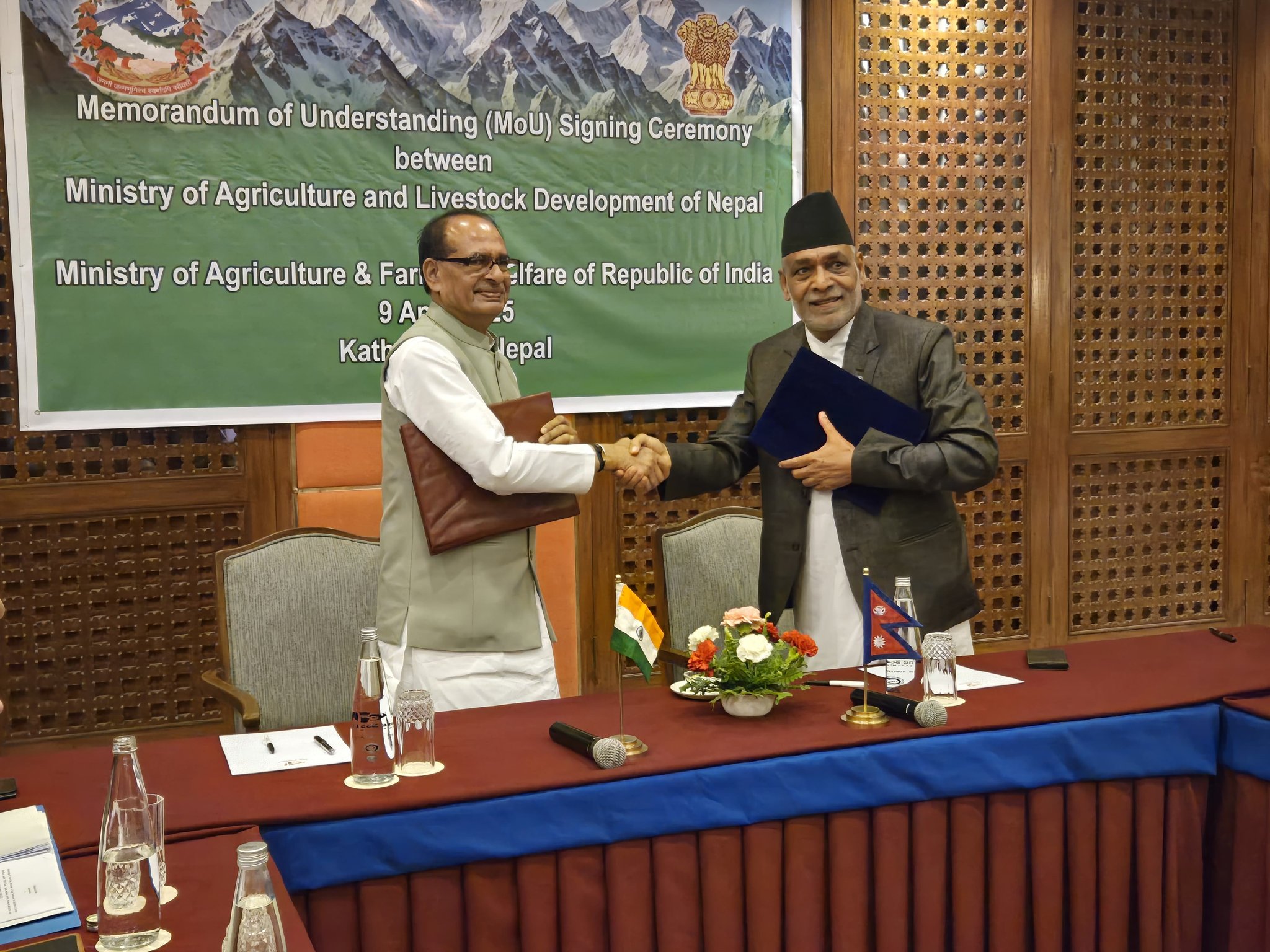India-Nepal Agricultural Ties Deepen Following Ministerial Visit Amid BIMSTEC Momentum

In a strategically timed visit following the recent meeting between Indian Prime Minister Narendra Modi and Nepali Prime Minister KP Sharma Oli in Bangkok during the BIMSTEC Summit, India’s Minister of Agriculture, Farmers Welfare & Rural Development, Shivraj Singh Chouhan, arrived in Kathmandu from April 8 to 10, 2025. His mission: to participate in the 3rd BIMSTEC Ministerial Meeting on Agriculture (3rd BAMM) and fortify India-Nepal agricultural cooperation.
This visit, although centered around a multilateral platform, carried clear undertones of strengthening bilateral synergy in a sector that is not just economically vital but politically symbolic for both countries.
BIMSTEC as a Regional Lever
The Bay of Bengal Initiative for Multi-Sectoral Technical and Economic Cooperation (BIMSTEC) has steadily evolved into a geopolitical bridge linking South Asia and Southeast Asia. The 3rd BAMM, hosted by Nepal on April 9, reinforced this trajectory. With agriculture and food security now recognized as a core area of cooperation, this ministerial forum is emerging as the key decision-making platform for collective agricultural progress across member nations.
During this year’s meeting, the member states deliberated on strategies to accelerate growth in agriculture, fisheries, and livestock. However, the backdrop of Chouhan’s visit—coming shortly after the Modi-Oli meeting in Bangkok—suggests the bilateral dimension of the visit was just as critical as the regional one.
A Bilateral Push within a Multilateral Frame
The highlight of Chouhan’s bilateral engagements was the signing of a new Memorandum of Understanding (MoU) between India and Nepal, replacing the long-standing 1991 agreement on agricultural cooperation. The new MoU expands cooperation into vital contemporary areas such as organic farming, bio-fertilizers, post-harvest management, micro-irrigation, climate-resilient farming, and sustainable agricultural practices.
This shift reflects not only a modernization of technical cooperation but also an effort to align agricultural development with global challenges such as climate change and food insecurity. The signing also symbolized a reset in bilateral terms—updated not just in scope but in strategic importance.
A Meeting with Oli: More Than Courtesy
Chouhan’s courtesy call on Prime Minister Oli went beyond mere diplomatic formalities. It functioned as a follow-through on the Bangkok dialogue between the two premiers. In the meeting, Chouhan conveyed greetings from the Indian leadership and reiterated the “deep-rooted” historical, cultural, and civilizational links between the two nations.
Significantly, the discussion also included future pathways to expand agricultural cooperation. For a country like Nepal, where over 60% of the population is engaged in agriculture, India's technological and developmental assistance in this domain holds the potential to shift the rural economy—politically advantageous for any sitting government.
Strategic Symbolism and Timing
The optics and timing of the visit matter. India’s engagement with Nepal at both multilateral and bilateral levels underscores a larger diplomatic strategy—asserting soft power and reinforcing regional leadership through cooperative development rather than competition. Agriculture, being apolitical and tied to livelihood, presents the ideal sector for building trust and long-term influence.
Moreover, given China’s increasing interest in Nepal’s infrastructure and trade sectors, India's proactive role in supporting agriculture may be aimed at rebalancing influence in a domain that touches the lives of millions of Nepali citizens.
Conclusion
The visit of Shivraj Singh Chouhan has been more than a diplomatic formality; it marked a reaffirmation of India’s evolving regional policy—grounded in technical cooperation, people-to-people ties, and multilateral engagement. As BIMSTEC slowly matures into a more action-oriented bloc, such visits ensure that bilateral relations are not lost in the larger shuffle of regionalism. For India and Nepal, this visit may well serve as a foundation for a new era in agricultural diplomacy.

![From Kathmandu to the World: How Excel Students Are Winning Big [Admission Open]](https://nepalaaja.com/img/70194/medium/excel-college-info-eng-nep-2342.jpg)
